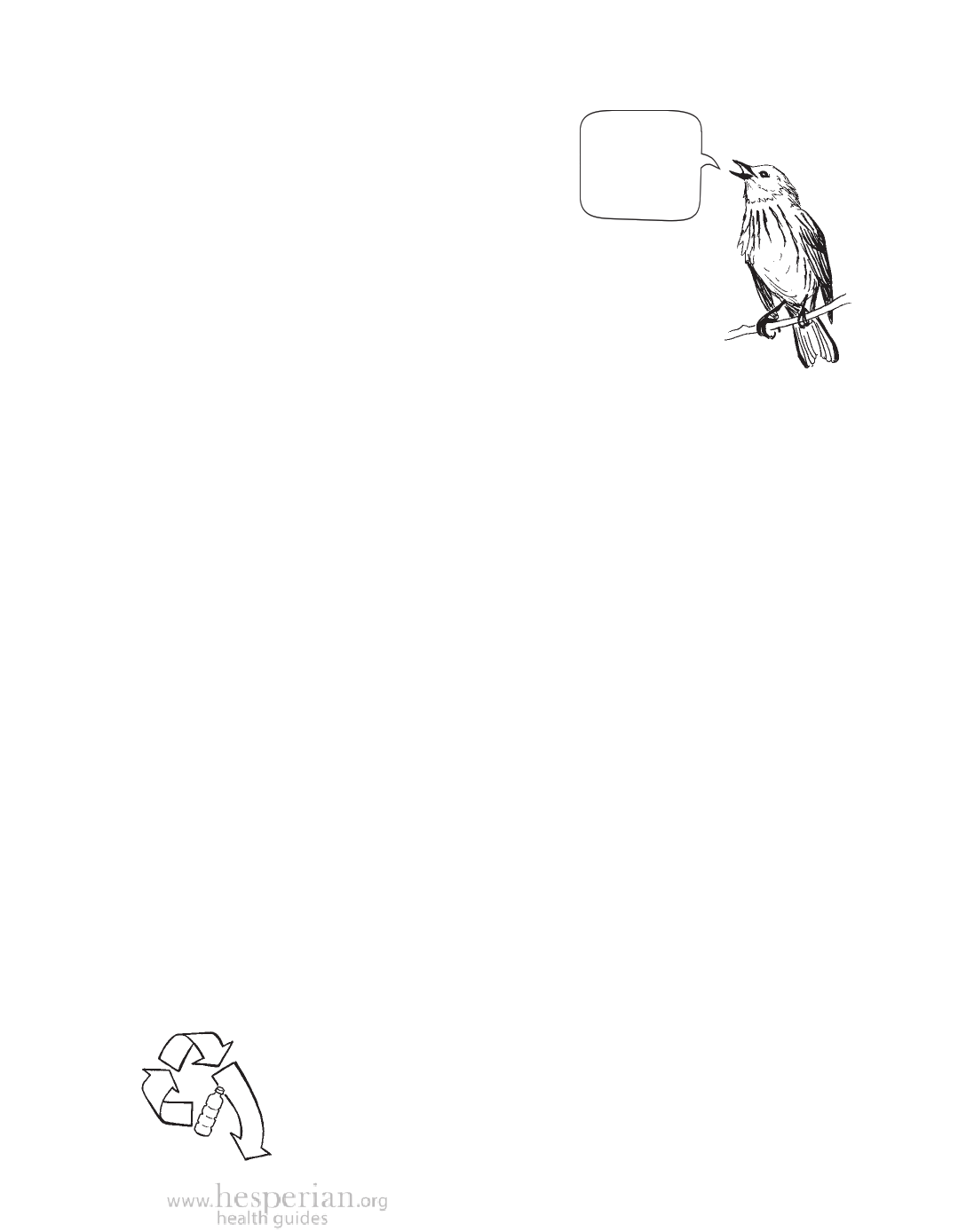
A Community Solid Waste Program
Recycling:
• reduces the amount of solid waste
polluting our environment.
• reduces the amount of solid waste in need
of disposal, saving space and money.
Recycling
preserves
resources
you and I
need to live!
• reduces resource use by using the resources more than once.
• helps the local and national economy because fewer raw
materials need to be imported.
• provides jobs.
What materials can be recycled?
The materials that can be recycled depend on the local recycling industry.
Glass is made from sand, soda ash, and lime. When disposed of, it wears
down but does not break down into its source materials again. To recycle glass,
it is sorted by color, melted into a liquid, and shaped into new containers. Some
glass is also recycled into materials used in roads or buildings. Many glass
products such as bottles can be washed and reused without being recycled.
Aluminum is made from a metal ore called bauxite that is mined from the
earth. It does not break down to its original ore, but gets worn down like glass.
Aluminum is recycled by melting and reshaping it into new cans and other things.
Tin coated steel cans, such as soup and fruit cans, are recycled by
separating the tin from the steel. The steel and tin are then washed and sold to
make more cans or other products.
Rubber is made from natural tree resin and petroleum. Rubber is sometimes
recycled by melting or chipping it and remolding it into new things.
Paper is made from wood, cotton, and other plants with strong fibers. Paper
is one of the few materials that can be recycled into itself again. Commercial
paper is often recycled in industrial plants. Paper can also be recycled by hand
to produce beautiful paper products for the home and for sale.
Products that contain toxic materials, such as computers, batteries, electronics,
paints, solvents and pesticides, and the containers that store them, need careful
handling so recycling workers are not exposed to toxic chemicals (see pages 410
to 411, and 459 to 462). Some of these products cannot be recycled at all, which
is why it is better to produce fewer of them in the first place.
The problem with recycling plastics
When plastic is recycled, its quality decreases. A plastic bottle is not recycled
to make another plastic bottle, but something of lesser quality. Plastic
can be recycled only a few times before it can no longer be used.
Recycling some plastics releases toxic gas that is harmful
to workers and communities. And a lot of plastic intended for
recycling ends up being dumped in landfills. This is why it is
best to use as little plastic as possible.
405
A Community Guide to Environmental Health 2012